ChemR23 Polyclonal Antibody
- Catalog No.:YT0897
- Applications:WB;IHC;IF;ELISA
- Reactivity:Human;Mouse;Rat
- Target:
- ChemR23
- Gene Name:
- CMKLR1
- Protein Name:
- Chemokine-like receptor 1
- Human Gene Id:
- 1240
- Human Swiss Prot No:
- Q99788
- Mouse Gene Id:
- 14747
- Mouse Swiss Prot No:
- P97468
- Rat Swiss Prot No:
- O35786
- Immunogen:
- The antiserum was produced against synthesized peptide derived from human CMKLR1. AA range:221-270
- Specificity:
- ChemR23 Polyclonal Antibody detects endogenous levels of ChemR23 protein.
- Formulation:
- Liquid in PBS containing 50% glycerol, 0.5% BSA and 0.02% sodium azide.
- Source:
- Polyclonal, Rabbit,IgG
- Dilution:
- WB 1:500 - 1:2000. IHC: 1:100-300 ELISA: 1:20000. IF 1:100-300 Not yet tested in other applications.
- Purification:
- The antibody was affinity-purified from rabbit antiserum by affinity-chromatography using epitope-specific immunogen.
- Concentration:
- 1 mg/ml
- Storage Stability:
- -15°C to -25°C/1 year(Do not lower than -25°C)
- Other Name:
- CMKLR1;CHEMR23;DEZ;Chemokine-like receptor 1;G-protein coupled receptor ChemR23;G-protein coupled receptor DEZ
- Observed Band(KD):
- 42kD
- Background:
- developmental stage:Expressed during bone development.,function:Orphan receptor. Could be a chemotactic peptide receptor. May have a function in bone metabolism. Acts as a coreceptor for several SIV strains (SIVMAC316, SIVMAC239, SIVMACL7E-FR and SIVSM62A), as well as a primary HIV-1 strain (92UG024-2).,similarity:Belongs to the G-protein coupled receptor 1 family.,tissue specificity:Prominently expressed in developing osseous and cartilaginous tissue. Also found in adult parathyroid glands.,
- Function:
- developmental stage:Expressed during bone development.,function:Orphan receptor. Could be a chemotactic peptide receptor. May have a function in bone metabolism. Acts as a coreceptor for several SIV strains (SIVMAC316, SIVMAC239, SIVMACL7E-FR and SIVSM62A), as well as a primary HIV-1 strain (92UG024-2).,similarity:Belongs to the G-protein coupled receptor 1 family.,tissue specificity:Prominently expressed in developing osseous and cartilaginous tissue. Also found in adult parathyroid glands.,
- Subcellular Location:
- Cell membrane ; Multi-pass membrane protein . Internalizes efficiently in response to RARRES2. .
- Expression:
- Prominently expressed in developing osseous and cartilaginous tissue. Also found in adult parathyroid glands. Expressed in cardiovascular system, brain, kidney, gastrointestinal tissues and myeloid tissues. Expressed in a broad array of tissues associated with hematopoietic and immune function including, spleen, thymus, appendix, lymph node, bone marrow and fetal liver. Among leukocyte populations abundant expression in monocyte-derived macrophage and immature dendritic cells (DCs). High expression in blood monocytes and low levels in polymorphonuclear cells and T-cells. Expressed on endothelial cells. Highly expressed in differentiating adipocytes.
- June 19-2018
- WESTERN IMMUNOBLOTTING PROTOCOL
- June 19-2018
- IMMUNOHISTOCHEMISTRY-PARAFFIN PROTOCOL
- June 19-2018
- IMMUNOFLUORESCENCE PROTOCOL
- September 08-2020
- FLOW-CYTOMEYRT-PROTOCOL
- May 20-2022
- Cell-Based ELISA│解您多样本WB检测之困扰
- July 13-2018
- CELL-BASED-ELISA-PROTOCOL-FOR-ACETYL-PROTEIN
- July 13-2018
- CELL-BASED-ELISA-PROTOCOL-FOR-PHOSPHO-PROTEIN
- July 13-2018
- Antibody-FAQs
- Products Images
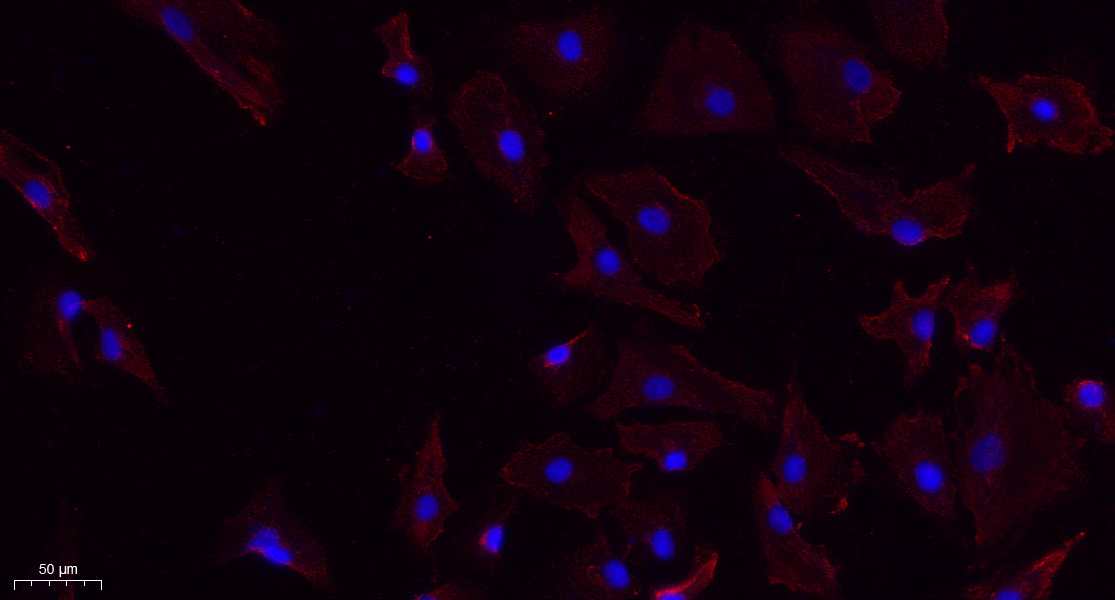
- Immunofluorescence analysis of A549. 1,primary Antibody(red) was diluted at 1:200(4°C overnight). 2, Goat Anti Rabbit IgG (H&L) - Alexa Fluor 594 Secondary antibody was diluted at 1:1000(room temperature, 50min).3, Picture B: DAPI(blue) 10min.
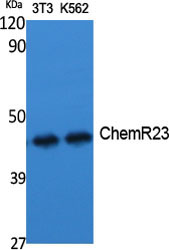
- Western Blot analysis of various cells using ChemR23 Polyclonal Antibody diluted at 1:1000
.jpg)
- Western Blot analysis of COLO205 cells using ChemR23 Polyclonal Antibody diluted at 1:1000
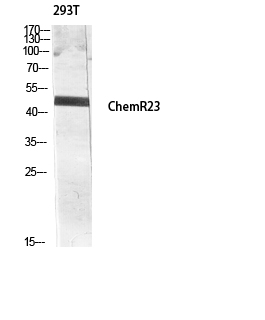
- Western blot analysis of 293T lysis using ChemR23 antibody. Antibody was diluted at 1:1000
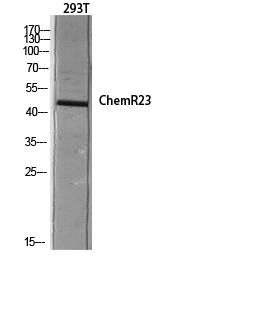
- Western blot analysis of 293T lysis using ChemR23 antibody. Antibody was diluted at 1:1000

- Western blot analysis of lysates from HeLa and HUVEC cells, using CMKLR1 Antibody. The lane on the right is blocked with the synthesized peptide.
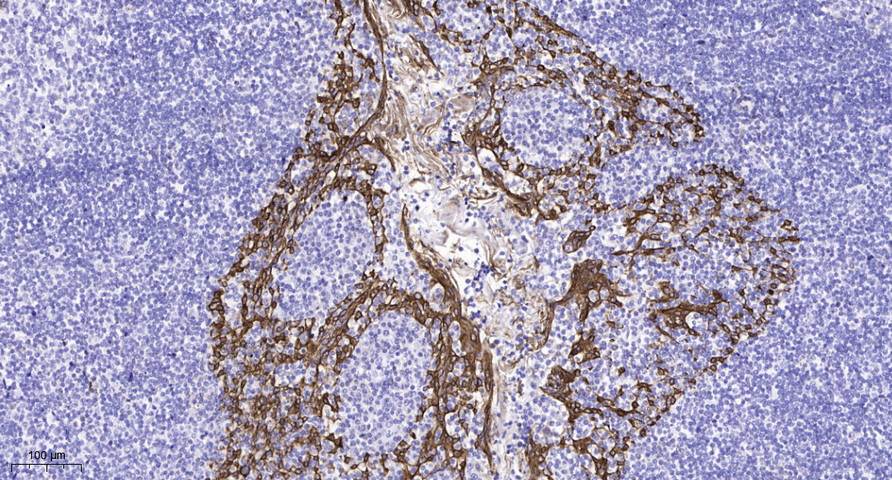
- Immunohistochemical analysis of paraffin-embedded human tonsil. 1, Antibody was diluted at 1:200(4° overnight). 2, Tris-EDTA,pH9.0 was used for antigen retrieval. 3,Secondary antibody was diluted at 1:200(room temperature, 45min).



